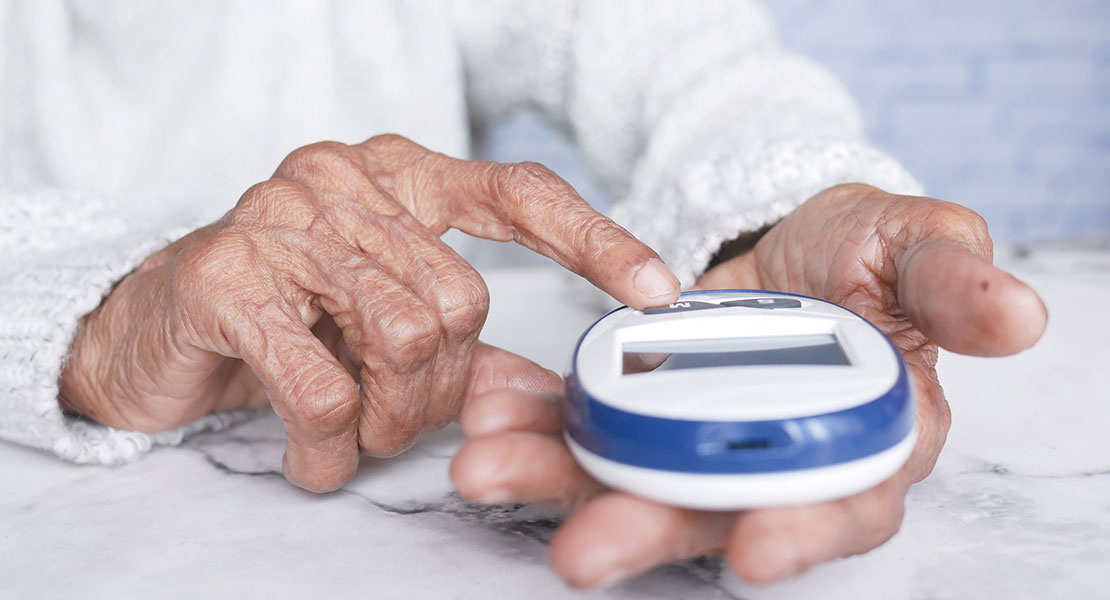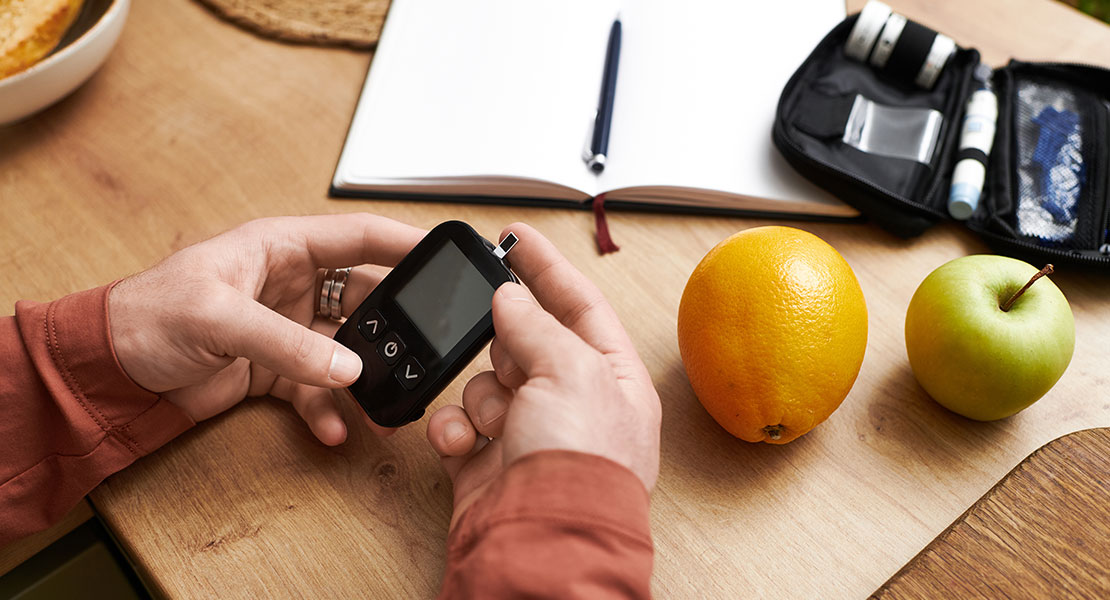Cataracts are a widespread eye condition that gradually leads to the clouding of the eye’s natural lens, making vision blurry, dim, and less sharp over time. This condition can significantly impact daily activities such as reading, driving, and recognising faces, ultimately reducing the overall quality of life. While cataracts are most commonly associated with ageing—developing naturally as part of the ageing process—other factors can accelerate their formation, including genetics, prolonged exposure to ultraviolet (UV) radiation, smoking, and underlying health conditions.
One of the most significant risk factors beyond ageing is diabetes mellitus, a chronic metabolic disorder that affects millions of people worldwide. Research has shown that individuals with diabetes are at a considerably higher risk of developing cataracts compared to those without the condition. More importantly, diabetic cataracts tend to develop at an earlier age, sometimes decades sooner than in non-diabetic individuals. This means that people with diabetes often experience vision deterioration sooner than expected, making early detection and proactive management critical.
The link between diabetes and cataracts is well-documented, with high blood sugar levels playing a key role in damaging the eye’s lens. Prolonged exposure to elevated glucose levels triggers biochemical changes in the lens, leading to structural damage and cloudiness. Over time, these changes make the lens progressively more opaque, obstructing the passage of light and impairing vision. If left untreated, cataracts can lead to severe vision impairment or even blindness, making them a major concern for people living with diabetes.
Understanding the science behind cataract formation in diabetic individuals is crucial for effective prevention and management. High blood sugar levels affect the lens through several mechanisms, including sorbitol accumulation, oxidative stress, and protein glycation, all of which contribute to the breakdown of lens clarity. Research has demonstrated that maintaining good blood sugar control can significantly slow down or prevent the onset of cataracts in diabetic patients.
This article delves deeper into the relationship between diabetes and cataracts, exploring the underlying scientific mechanisms, the latest research findings, and proven strategies to reduce the risk of cataract formation. Additionally, it highlights early warning signs, available treatment options, and lifestyle adjustments that can help diabetic individuals protect their vision and maintain optimal eye health for as long as possible.
How Does Diabetes Cause Cataracts?
Diabetes is a chronic condition that affects multiple organs in the body, and the eyes are among the most vulnerable. The presence of high blood sugar levels over an extended period can cause significant changes in the natural lens of the eye, ultimately leading to cataract formation. Cataracts develop when the normally clear lens becomes cloudy, making it harder for light to pass through and reach the retina. This results in blurred, dimmed, or distorted vision that worsens over time.
In people with diabetes, the risk of developing cataracts is significantly higher due to prolonged exposure to elevated glucose levels, which triggers a series of biochemical changes in the eye. Unlike age-related cataracts, which usually develop gradually over decades, diabetic cataracts can appear much earlier and progress more rapidly, sometimes leading to severe vision loss if not managed properly.
But what exactly happens in the eye that causes this increased risk? Here are the key mechanisms linking diabetes and cataract formation:

- Sugar Build-Up in the Lens
One of the primary ways diabetes contributes to cataract formation is through excess glucose accumulation in the lens. Under normal circumstances, the lens derives energy primarily from glucose, which is broken down and used efficiently. However, when blood sugar levels remain consistently high, the lens absorbs more glucose than it can process, leading to an overload of sugar molecules.
To manage this excess, the body converts some of the glucose into sorbitol, a type of sugar alcohol. However, sorbitol does not diffuse easily out of the lens. Instead, it accumulates and attracts water, causing the lens fibers to swell and become distorted. This swelling disrupts the precise structure of the lens proteins, leading to light scattering and cloudiness—hallmarks of cataract formation.
Additionally, because the lens lacks blood vessels to help remove excess sugar and metabolic byproducts, sorbitol continues to build up over time, making the lens progressively more opaque. Research indicates that this sorbitol pathway plays a major role in the early development of cataracts in diabetic individuals, even in those with mild or moderate blood sugar fluctuations.
Key Point: Sorbitol accumulation leads to lens swelling, structural damage, and increased cloudiness, accelerating cataract formation.
- Oxidative Stress and Free Radical Damage
Another major contributor to cataract formation in diabetic individuals is oxidative stress. The body naturally produces free radicals, which are unstable molecules that can damage cells. Normally, the body has antioxidant defense mechanisms to neutralize free radicals and prevent harm. However, in diabetes, this balance is disrupted.
Chronically high blood sugar levels cause an overproduction of reactive oxygen species (ROS)—a type of free radical—while simultaneously weakening the body’s natural antioxidant defenses. This results in oxidative stress, where the excess free radicals begin to attack and degrade the proteins and lipids within the lens.
Since the lens is made up of proteins arranged in a specific structure to maintain transparency, any oxidative damage disrupts this organization, leading to protein clumping and lens opacity. Over time, the damage accumulates, resulting in faster cataract formation compared to non-diabetic individuals.
Additionally, oxidative stress also triggers inflammatory responses in the eye, which can further accelerate tissue damage and contribute to other diabetic eye diseases, such as diabetic retinopathy.
Key Point: Diabetes increases oxidative stress, leading to damage in the lens proteins and lipids, making cataracts develop faster.
- Protein Damage in the Lens (Non-Enzymatic Glycation)
A third major mechanism that links diabetes to cataracts is non-enzymatic glycation, a process where excess sugar molecules attach to proteins in the body.
Proteins in the eye’s lens are particularly vulnerable to glycation because they are among the longest-living proteins in the human body—they don’t regenerate or repair as easily as proteins in other tissues. When sugar molecules bind to these lens proteins, they form advanced glycation end-products (AGEs).
These AGEs cause structural changes in the lens proteins, making them less flexible, more brittle, and prone to clumping. As more proteins become glycated, the lens loses its transparency and begins to scatter light instead of focusing it properly, leading to blurred and cloudy vision.
Research suggests that glycation not only contributes to cataract development but also makes existing cataracts worsen more quickly. Studies have found that diabetic patients with poor blood sugar control (high HbA1c levels) have a significantly higher concentration of AGEs in their lens tissues, correlating with more severe cataract progression.
Key Point: Excess sugar binds to lens proteins, forming harmful AGEs that lead to protein damage, lens opacity, and cataract development.
- The Combined Impact of These Processes
The three mechanisms outlined above—sugar build-up (sorbitol pathway), oxidative stress, and protein glycation—work together to make cataracts develop earlier and progress faster in people with diabetes.
- The accumulation of sorbitol causes swelling and disrupts the lens structure.
- Oxidative stress damages the lens proteins and lipids, accelerating cataract formation.
- Protein glycation (AGEs) makes the lens stiff and opaque, worsening vision problems.
Because these processes feed into each other, diabetic individuals often experience faster deterioration of vision, requiring earlier intervention compared to people without diabetes.
The severity and speed of cataract formation largely depend on blood sugar control. Individuals with poorly controlled diabetes (consistently high HbA1c levels) are at a much greater risk, while those who maintain stable blood sugar levels may significantly delay or even prevent cataract development.
- Are People with Diabetes More Likely to Develop Cataracts?
Yes, multiple studies confirm that people with diabetes are at higher risk of cataracts.
- Wisconsin Epidemiologic Study of Diabetic Retinopathy found that people with type 2 diabetes had nearly a 25% risk of needing cataract surgery within 10 years.
- Beaver Dam Eye Study showed that diabetic patients were more likely to develop cataracts and require surgery at a younger age.
- Blue Mountains Eye Study confirmed that diabetes increases the risk of posterior subcapsular cataracts, one of the most vision-threatening types.
Who Is Most at Risk of Developing Diabetic Cataracts?
While all individuals with diabetes are at a higher risk of developing cataracts compared to those without the condition, certain key factors can further increase the likelihood and accelerate cataract formation. Understanding these risk factors can help people with diabetes take proactive steps to protect their vision and prevent early cataract development.
- Duration of Diabetes: The Longer You Have It, the Greater the Risk
The length of time a person has lived with diabetes plays a major role in cataract development. Studies show that people who have had diabetes for 10 years or more are at a significantly higher risk of developing cataracts compared to those who were recently diagnosed.
This is because prolonged exposure to high blood sugar levels causes cumulative damage to the lens over time. Even in people with well-managed diabetes, long-term metabolic stress on the eyes still increases cataract risk. The lens undergoes constant structural changes due to sorbitol accumulation, oxidative stress, and glycation of proteins, which gradually clouds the lens and impairs vision.
Key Insight:
- The longer diabetes remains in the body, the more damage it does to the lens.
- Even people with well-controlled diabetes have a higher risk after many years of the condition.
- Early detection through regular eye exams is crucial for those who have had diabetes for many years.
- Poor Blood Sugar Control: High HbA1c Levels Increase the Risk
One of the strongest predictors of cataract formation in diabetics is poor blood sugar control. The HbA1c test, which measures average blood glucose levels over 2–3 months, provides a key indicator of long-term sugar control. Research shows that individuals with higher HbA1c levels (above 7%) have a markedly increased risk of developing cataracts earlier and at a faster rate.
When blood sugar remains consistently high, the lens absorbs excess glucose, leading to increased sorbitol accumulation, oxidative damage, and non-enzymatic glycation of lens proteins—all of which contribute to clouding of the lens.
Furthermore, people with fluctuating glucose levels (experiencing frequent high and low blood sugar swings) may also damage their lens at a faster rate, as the eye struggles to adjust to unstable glucose levels.
Key Insight:
- Consistently high HbA1c levels accelerate cataract formation due to continuous exposure to high glucose levels.
- Blood sugar fluctuations (not just consistently high glucose) can also contribute to cataract development.
- Tight glucose control with a target HbA1c below 7% is recommended to delay cataract progression.

- Age: Older Adults with Diabetes Are More Susceptible
While cataracts naturally become more common with age, diabetes significantly speeds up the process, leading to early-onset cataracts in some individuals.
Typically, age-related cataracts begin to develop in the 60s or 70s, but in people with diabetes, they can appear in the 40s or 50s. This means that diabetic patients may require cataract surgery much earlier than the general population.
Additionally, the combination of diabetes and ageing results in a higher prevalence of other eye conditions, such as diabetic retinopathy, glaucoma, and macular degeneration, which can further impact vision and complicate cataract treatment.
Key Insight:
- Diabetic individuals can develop cataracts decades earlier than non-diabetic individuals.
- Older adults with diabetes are also more likely to suffer from multiple eye diseases, worsening overall vision.
- Early lifestyle interventions and eye screenings can help delay cataract formation.
Additional Risk Factors for Diabetic Cataracts
Beyond these primary risk factors, several other lifestyle and health-related factors can further increase the likelihood of cataract development in diabetic individuals:
- High Blood Pressure and Cardiovascular Disease
People with diabetes often have high blood pressure (hypertension) and other cardiovascular issues, which can impair blood circulation to the delicate structures of the eye. Poor circulation reduces oxygen and nutrient supply, weakening the lens and increasing cataract risk.
- Smoking and Excessive Alcohol Consumption
Smoking introduces harmful toxins and free radicals into the body, significantly increasing oxidative stress. This weakens the eye’s ability to repair itself, making cataracts develop more quickly. Similarly, excessive alcohol consumption depletes antioxidants in the body, making the lens more vulnerable to damage.
- UV Light Exposure and Lack of Eye Protection
Exposure to ultraviolet (UV) rays from the sun is a known contributor to cataract formation. People with diabetes already have a weakened lens, and frequent UV exposure accelerates the breakdown of lens proteins. Wearing UV-blocking sunglasses and wide-brimmed hats can significantly reduce this risk.
- Obesity and Unhealthy Diet
Poor dietary habits and obesity are linked to higher inflammation levels and increased oxidative stress, both of which contribute to faster lens degradation. A nutrient-rich diet with antioxidants, vitamins C & E, and omega-3 fatty acids may help protect the lens from damage.
How Can You Prevent Cataracts if You Have Diabetes?
The good news is that you can take steps to slow down or even prevent cataract formation:
- Keep Your Blood Sugar in Check – Aim for an HbA1c level below 7% to reduce eye complications.
- Eat a Diet Rich in Antioxidants – Foods like leafy greens, berries, and nuts help protect your eyes.
- Wear Sunglasses – UV light exposure can speed up cataract development.
- Consider Aldose Reductase Inhibitors – These drugs, still being researched, may help prevent sorbitol build-up in the lens.
- Regular Eye Check-Ups – Catching cataracts early can help you manage them better.
Can Cataracts Be Treated?
Yes! If cataracts become severe, surgery is the best option. During the procedure, the cloudy lens is removed and replaced with an artificial intraocular lens (IOL), restoring clearer vision. Cataract surgery is one of the most common and highly successful procedures worldwide, with millions of people regaining their sight each year.
For individuals with diabetes, cataract surgery requires specialised care due to the increased risk of post-surgical complications, such as swelling in the retina (macular oedema), delayed healing, and a higher chance of infection. This makes it crucial to choose an experienced surgical team that understands the unique needs of diabetic patients.
The London Cataract Centre is a leading centre of excellence for cataract surgery, offering advanced surgical techniques, state-of-the-art technology, and expert ophthalmic surgeons. With a focus on precision, safety, and optimal visual outcomes, the centre provides tailored treatment plans to ensure the best possible results, even for patients with diabetes or other complex eye conditions.
If you have diabetes and are considering cataract surgery, it's essential to follow your doctor’s advice, maintain good blood sugar control before and after surgery, and attend regular post-operative check-ups to ensure a smooth recovery and long-term success.
Final Thoughts
If you have diabetes, protecting your vision should be a top priority. Keeping blood sugar under control, eating well, and having regular eye exams can help delay cataracts or prevent them altogether.
If you’re noticing blurry vision, glare, or difficulty reading, consult an eye specialist for an early check-up. The sooner you catch cataracts, the better your treatment options!


